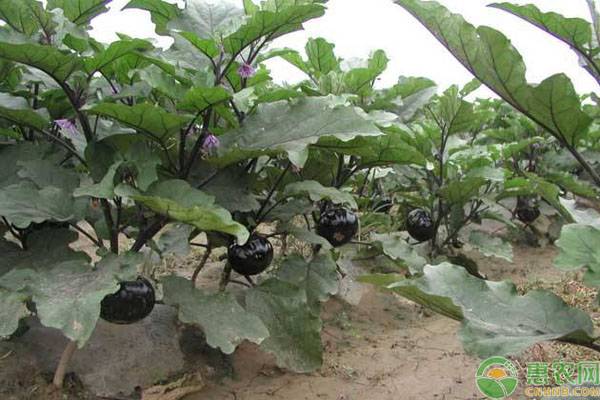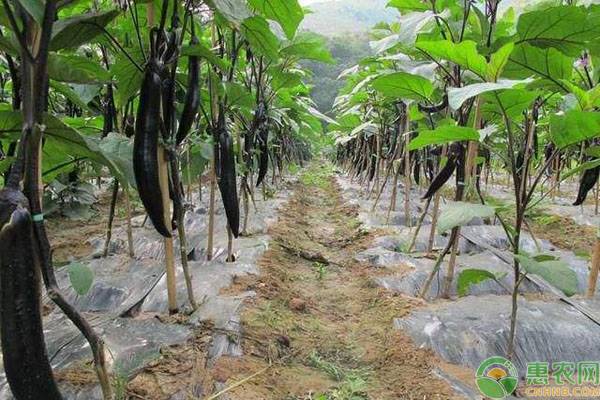Key points for high-yield cultivation management of summer cultivars
Entering May Day, the early rice enters the stage of weeding and fertilization, and after the work of transplanting the rice, it is a good season for sowing the eggplant in summer. During this period, the eggplant planting is hot and rainy in summer, and the pests and diseases are high. Therefore, in order to ensure the high yield and high quality of the eggplant, it is necessary to do a good job in prevention and control. Specifically how to do it, let's take a look at the eggplant planting technique.

1, variety selection
In summer, the cultivation of eggplant in open field should consider the climatic conditions such as high temperature and rain in summer, high temperature and high humidity, so it is best to choose the varieties with strong heat resistance and disease resistance, which is the key to successful cultivation of eggplant in summer.
2, sowing seedlings
Soak seeds before sowing, put the seeds in 55 ° C hot water for 15 minutes, or soak for 12 hours at room temperature, or use 40% formaldehyde in 100 times solution for 20 minutes, etc., rinse with water and then germination. Eggplant seedlings are generally in April-May, and the nursery bed should be convenient to drain and the land is fertile and loose. Before the nursery, do a good job in land preparation, apply enough base fertilizer, the amount of 20-30g per mu, can be shaded shed or shade net to prevent rainstorm and exposure, until the seedling grows to 15cm, you can colonize.
3, colonization
Eggplant planting plots will be hot and rainy after planting. You can choose fertile soil with good drainage. Eggplant should not be planted with heavy sorghum. It is not advisable to choose the plot of pepper, tomato, potato and other solanaceous crops. Piece. For the purpose of irrigation and drainage, deep sorghum cultivation can be used.

4, fertilizer management
Before the plant is sealed, the potassium sulfate compound fertilizer should be chased once. In the middle and late stages of the growth of the eggplant, the fertilizer should be applied successively. It should be applied every 10 days, 10 kg of urea per acre, or other fertilizers with the same nitrogen content. At the same time, combined with the prevention and control of pests and diseases, adding 0.3% potassium dihydrogen phosphate and other trace element fertilizers to delay plant senescence and increase the yield in the middle and late stages.
5. Pest control
The common pests and diseases of eggplant include rickets, blight, plague, verticillium, gray mold, red spider, etc. The control measures are as follows:
(1) çŒ ç—… disease, blight: use the fine nail cream Mn-Zn, smog water or methyl thiophanate spray, spray once every 5-7 days, even spray 2-3 times.
(2) Verticillium wilt: the central diseased plant is removed in time; the plants around the central diseased plant are rooted with Bacillus subtilis, preferably once at the time of colonization, and once again when the citrus is expanded.
(3) Cotton blight: spray with azoxystrobin, manganin, manganese zinc, frost urea, manganese zinc, etc., focus on spraying the fruit, spray once every 10 days, for 2-3 times.

(4) Gray mold: use procymidone, cyprodinil, etc., spray once every 5-7 days, 2-3 times in a row. In the time of silk flowering, add procymidone or cyprodinil or fluvox eye, etc., or handle or spray flowers.
(5) Aphids: Spray with any agent such as imidacloprid, pymetrozine or acetamiprid, and pay attention to the alternate use of the agents.
(6) Red spider, tea yellow sputum: with Kruth, avermectin, Dazhiling and other chemicals, spray once every 7 days, 2-3 times in a row.
Finally, the eggplant should be harvested in the open field. When the eggplant is mature, it should be harvested immediately. When harvesting, cut the fruit handle with scissors to prevent damage.
For the wonderful pictures and popular comments on the cultivation of the open field eggplant, you may be interested in the following recommended content, welcome to read.
Hot Sale SARS-CoV2(COVID-19) Test Kit
NINGBO AUTRENDS INTERNATIONAL TRADE CO., LTD , https://www.metests.com